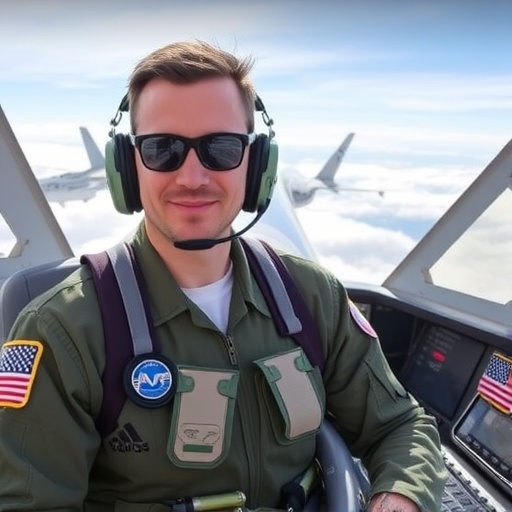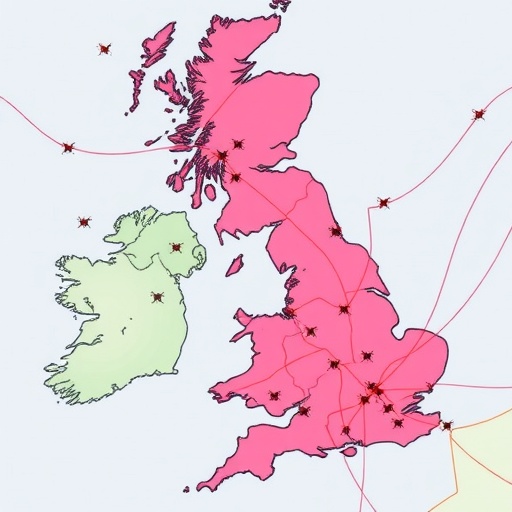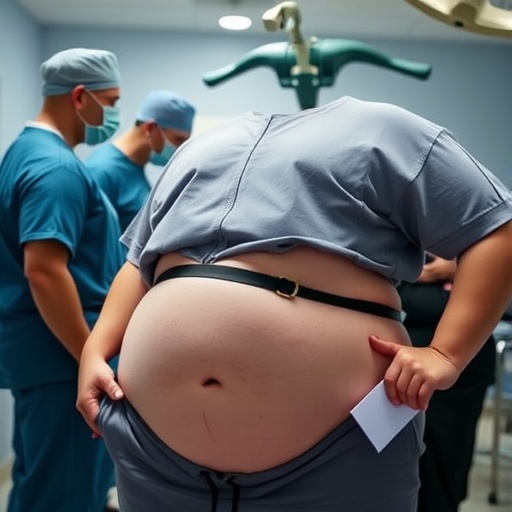In the rapidly evolving field of aeromedical science, few case studies garner attention as uniquely compelling as the recent report detailing the successful return to flight of a military pilot suffering from a rare medical condition known as lingual thyroid. The findings, published in BMC Endocrine Disorders, not only highlight the intersection of aviation medicine and endocrinology but also underscore the meticulous processes undertaken to ensure pilot safety and operational efficacy. This remarkable case is indicative of the advances being made in understanding and managing medical conditions that could otherwise jeopardize flight operations.
Lingual thyroid, a condition characterized by an ectopic thyroid tissue located at the base of the tongue, can often go undiagnosed for an extended period due to its atypical presentation. The article explores how this condition can lead to significant thyroid hormone imbalances, posing potential risks for pilots whose jobs demand peak physical and mental performance. In the face of such a challenge, the case study of the military pilot presented offers insights into both the medical evaluations and the clinical decisions that led to this pilot’s recovery and return to active duty.
The specific challenges associated with lingual thyroid are multifaceted. Symptoms may include dysphagia, dysphonia, and in some cases, obstructive sleep apnea. Each of these symptoms can impose limitations on cognitive and physical abilities, critical components in aviation. The research emphasizes the importance of a comprehensive aeromedical evaluation to determine not only the pilot’s current health status but also their capability to perform under the rigorous demands of flight operations. This pilot’s case reinforces the need for thorough assessment protocols tailored to the unique circumstances that military aviators may encounter.
Throughout the evaluation process, the multidisciplinary approach to managing this case stands out. Collaboration among endocrinologists, aviation medicine specialists, and other healthcare professionals played a pivotal role in devising a tailored treatment plan. The importance of integrating knowledge from diverse medical fields cannot be understated, particularly in situations where the stakes are as high as pilot health and safety.
Importantly, the study outlines the steps taken following the initial diagnosis of lingual thyroid. The clinical team engaged in a series of tests to monitor the function of the ectopic thyroid tissue, evaluating both hormonal levels and the physical implications of the condition. The results from these assessments were imperative in determining the safest course of action regarding treatment and rehabilitation for the pilot.
Thyroid hormone replacement therapy emerged as a potential intervention, designed to stabilize the pilot’s hormone levels and mitigate the risks associated with the disorder. As the article details, this therapeutic approach significantly improved the pilot’s overall health metrics, showcasing a successful integration of medicine with military aviation needs. Through consistent monitoring and adjustments based on response to therapy, the pilot made substantial progress toward meeting the medical standards required for flight.
Pilots often face unique stressors related to their profession; therefore, psychological evaluations were equally important in this case. The article discusses how the psychological dimension of pilot health can impact overall performance and cognitive function. Ensuring the mental well-being of the pilot underwent rigorous analysis, as it was crucial to ascertain whether the medical condition, in tandem with any psychological stressors, could impede flight safety.
A significant highlight of this case study lies in the re-evaluation process that occurred after the pilot underwent treatment. Following a rigorous period of monitoring and rehabilitation, the pilot was subjected to comprehensive testing to assess readiness for flight. The insights drawn from this re-evaluation revealed the results of both medical interventions and psychological conditioning, which ultimately informed the decision to reinstate the pilot for active duty.
The ethical considerations surrounding the return-to-duty evaluations also warrant discussion. Concerns about the potential risks of allowing a pilot with such a condition to return to flight operations must be balanced with the nuanced understanding of the successful treatment outcomes. This case intersects with broader conversations about medical fitness in high-stakes professions, emphasizing the responsibility healthcare providers have in ensuring that pilots are not only fit for duty but do not face undue discrimination based on medical history.
Another point of interest noted was the pilot’s personal journey through recovery. The narrative shared in the report illustrates the psychological resilience and determination requisite of military personnel, as well as the support systems in place within the armed forces. Such resilience is emblematic of the ethos within military culture, where overcoming adversity is often seen as a testament to character and commitment.
Looking beyond this singular case, the research implies potential broader implications for the field of aeromedical evaluations. The findings advocate for adaptive methodologies in assessing pilot health, suggesting that unique medical conditions be met with customized evaluation strategies. This adaptability can lead to not only improved health outcomes for individual pilots but also a progressive enhancement to aviation safety as a whole.
As interest continues to grow in the fields of aeromedical research and military medicine, the implications of this case study will undoubtedly ripple through the community. It raises questions about how medical understanding can evolve, influencing future protocols and assessments that pertain to pilot health.
In summary, this remarkable case does more than simply document a successful return to flight for a military pilot with lingual thyroid; it opens a dialogue about the intersection of medicine and aviation. It emphasizes a commitment to not only maintaining a capable flying force but doing so through informed, compassionate, and evidence-based medical practices. The ongoing exploration of these issues will shape the future of aeromedical standards and practices, ensuring that the safety of pilots—and ultimately, the passengers they serve—remains a priority.
With this case serving as a reference point, it becomes evident that the pilot’s story is emblematic of larger themes in aviation health. The intersection of groundbreaking medical research, peer collaboration, and the unwavering spirit of military professionals creates a narrative that inspires not just within the sphere of aeromedical evaluation, but throughout the broader landscape of military and civilian aviation.
As we move forward into a new era of medical scrutiny in aviation, this pioneering case will continue to serve as an example for others facing similar medical challenges. The courage shown not only by the pilot but also by the medical team in navigating the complexities of such a condition is a powerful reminder of the role that determination and innovation play in pushing the boundaries of what is possible in aeromedical science.
In a world where aviation standards are continually evolving, the story of this pilot and their successful management of lingual thyroid reminds us of the human element present in every flight—a driving force that compels us to better understand and support the health of those who navigate our skies.
Subject of Research: Aeromedical evaluation of a military pilot with lingual thyroid
Article Title: Aeromedical evaluation and successful return to flight in a military pilot with lingual thyroid: a case report and follow-up
Article References:
Li, P., Wang, L., Xiao, L. et al. Aeromedical evaluation and successful return to flight in a military pilot with lingual thyroid: a case report and follow-up.
BMC Endocr Disord 25, 219 (2025). https://doi.org/10.1186/s12902-025-02041-9
Image Credits: AI Generated
DOI: 10.1186/s12902-025-02041-9
Keywords: lingual thyroid, aeromedical evaluation, military pilot, thyroid hormone replacement therapy, aviation medicine, medical standards, cognitive function, psychological health.
Tags: aeromedical case studiesaviation medicine advancementsendocrinology in flight safetyimpact of endocrine disorders on flight operationslingual thyroid condition managementmilitary aviation medicinemilitary pilot health evaluationoperational efficacy in aviationpilot medical conditionsrecovery from medical conditions in aviationthyroid disorders in pilotsthyroid hormone imbalance in pilots





